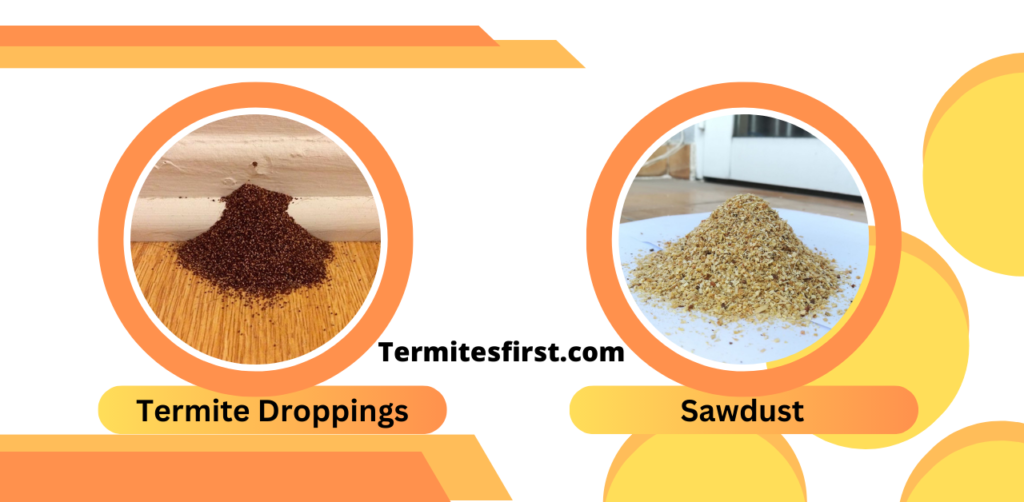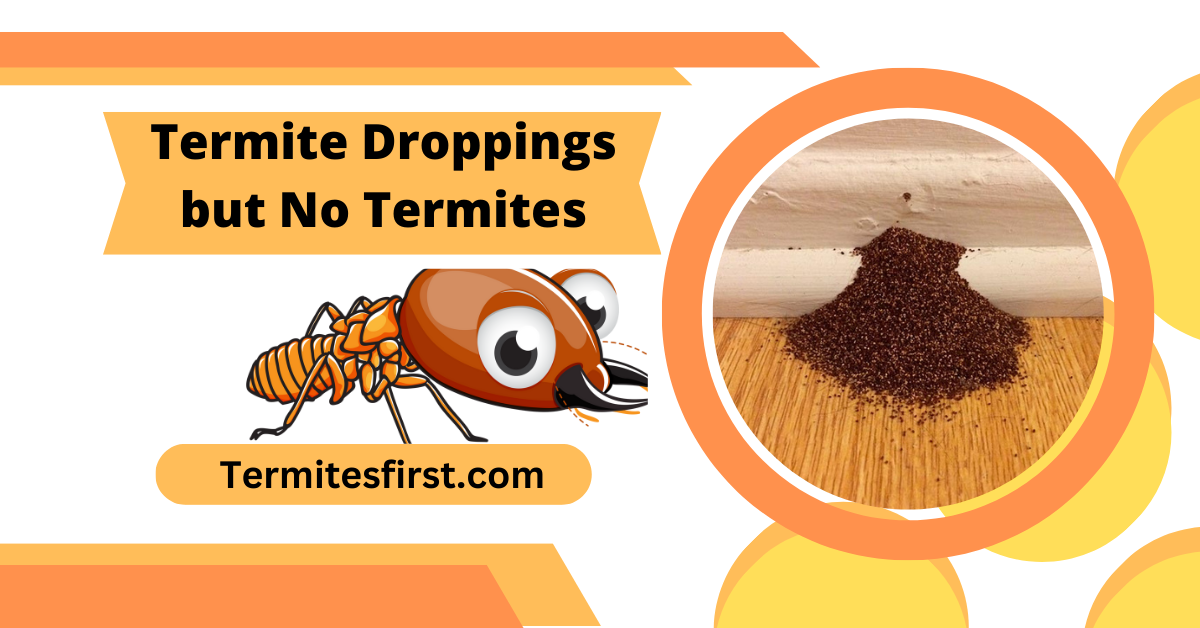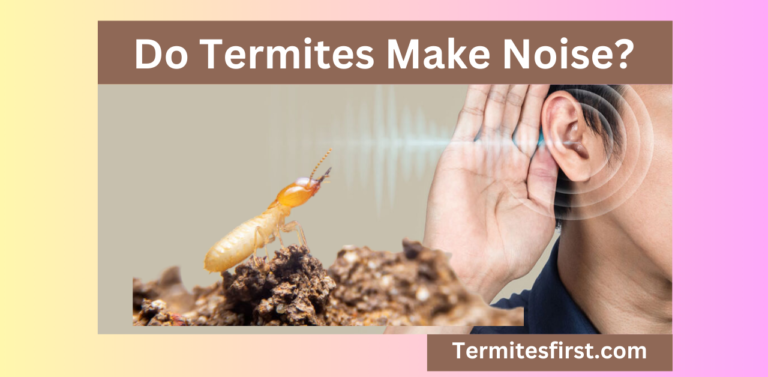Termite Droppings but No Termites: Identification & Action Guide
Investigating termite droppings without finding any termites can be a puzzling situation for homeowners. Exploring the reasons for termite droppings without the presence of actual termites can provide clarity on misconceptions and offer practical solutions. Understanding the characteristics of termite droppings, such as frass, and their significance allows for effective management of concerns regarding potential infestations at home. Stay informed and empowered to take appropriate action based on accurate information and expert advice.
Key Takeaways
- Inspect your home: Regularly check for termite droppings in areas like basements, attics, and crawl spaces to catch any potential infestations early.
- Differentiate from other pests: Understand the distinct characteristics of termite droppings, like their shape and color, to accurately identify them and distinguish them from other pest droppings.
- Address moisture issues: Eliminate excess moisture in your home as it can attract termites, even if you don’t see them, reducing the chances of a termite infestation.
- Prioritize professional inspection: If you find termite droppings or suspect a past infestation, seek the expertise of a pest control professional for a thorough evaluation and treatment plan.
- Take preventive measures: Implement preventive measures such as sealing cracks, removing wood debris near your home, and maintaining proper ventilation to reduce the risk of future termite infestations.
- Act promptly: Don’t delay taking action if you find evidence of termites; swift response can prevent significant damage and costly repairs.
Understanding Termite Droppings

Signs of Termites
Termite droppings, also called frass, are small, pellet-like excrement that termites leave behind. These droppings can serve as a warning sign of termite infestation, even if the actual insects are not visible.
Appearance Variations
The appearance of termite droppings may vary based on the type of termite infesting the area. For instance, drywood termites produce six-sided pellets that are hard and smooth.
Personal Insight
I once discovered termite droppings in my attic, resembling tiny grains of rice. Despite not seeing any termites initially, I later found out they were hidden within the walls.
Identifying Termite Droppings
Size and Shape
Termite droppings are distinctive for their small, individual pellet-like appearance, unlike the droppings of other pests. They are typically tiny, measuring around 1 mm in length. These droppings are cylindrical in shape with rounded ends, resembling small grains of rice.
Color and Texture
The color of termite droppings can vary from light brown to dark brown, depending on the type of wood the termites have consumed. Drywood termite droppings often have a lighter color, while subterranean termite droppings tend to be darker. The texture is often powdery or gritty due to the wood particles present.
Wood Particles
Inspecting termite droppings for the presence of wood particles is crucial in identifying an active infestation. When termites feed on wood, they create tunnels and chambers within it. As they push out their excrement, these wood particles get mixed with the droppings, forming what is known as termite frass.
My experience with identifying termite droppings taught me the importance of swift action when signs of infestation are detected. Once I noticed tiny pellets near wooden structures in my home, I immediately sought professional help to address the issue before it escalated. It’s essential to address termite problems promptly to prevent significant damage to your property.
Potential Dangers of Termite Droppings
Structural Damage
Sawdust-like termite droppings are often the first sign of an infestation. Damage caused by termites can weaken the structure of your property, leading to potential safety hazards. Small holes in walls or wood surfaces may indicate termite presence.
Ignoring termite droppings can result in severe structural damage over time. These drywood termites pests feed on wood, causing it to become hollow and brittle. Without prompt intervention, the integrity of your home could be compromised.
Costly Repairs
Failure to address termite droppings promptly may lead to costly repairs. Termites can cause extensive damage behind walls and in hidden areas, making it challenging to detect until it’s too late. The longer the infestation goes unnoticed, the more expensive the repairs can be.
I once overlooked termite droppings in my garage, assuming they were harmless debris. Unfortunately, this neglect led to a full-blown infestation that required significant repairs and treatments. It’s essential to take immediate action upon spotting any signs of termite activity.
Extensive Infestations
Undetected termite activity can quickly escalate into extensive infestations throughout your property. These pests reproduce rapidly, forming large colonies that can spread to multiple areas of your home. Once termites establish a stronghold, eradicating them becomes a complex and costly process.
Personal experience taught me that even a small amount of termite droppings should not be underestimated. Addressing the issue promptly can prevent the infestation from spreading and causing further damage. Regular inspections and early intervention are key to avoiding extensive infestations.
Why You Might See Droppings Without Termites
Life Cycle Completion
Termites may have completed their life cycle, leaving behind droppings without being present. These droppings are often indicative of a past infestation, even if the termites are no longer active.
Lingering Droppings
Droppings can remain long after the infestation has ended, making detection tricky. Due to their small size and inconspicuous nature, termites’ feces can go unnoticed for extended periods.
Environmental Factors
Environmental factors may cause termites to retreat temporarily, leaving droppings behind. For instance, changes in temperature or humidity levels can affect termite activity, leading them to abandon their current location.
In my experience, finding termite droppings without live termites can be both a relief and a concern. On one hand, it indicates that the immediate threat may have passed. However, the presence of old droppings suggests that there was once an infestation that could potentially recur if not properly addressed. It’s crucial to thoroughly inspect the property and consider seeking professional pest control services to prevent any future termite problems.
Signs of Past Termite Infestations
Hollow Sounds
Inspecting your home for signs of termite damage is crucial, even if you currently see no termites. Hollow-sounding wood can be a telltale sign of previous termite activity. When tapping on wooden structures and hearing an empty sound, it could indicate that termites have consumed the inner part of the wood.
Discarded Wings
Discarded wings near windows or doors are often a clear indicator of past termite infestations. Termites shed their wings after swarming to establish new colonies. Finding these wings indoors suggests that termites were present at some point.
I once found discarded termite wings near my window sills and immediately realized the severity of the situation. It prompted me to seek professional help to assess the extent of the previous infestation.
Mud Tubes or Tunnels
Mud tubes or tunnels left behind by termites are another sign of previous infestations. These tubes serve as protective pathways for termites traveling between their nest and a food source. Discovering mud tubes in or around your property indicates that termites were active in the area.
When I noticed mud tubes along the foundation of my house, I knew there had been a serious termite infestation in the past. It was a wake-up call to take proactive measures to prevent future termite damage.
Detecting Active Termite Infestations
Thorough Inspections
Utilize tools like moisture meters to detect areas with high moisture levels, attracting termites. Infrared cameras can help identify hidden infestations behind walls or ceilings. Look for termite nests near wooden structures or in damp soil.
When detecting termite activity without visible termites, conducting thorough inspections is crucial. Start by examining areas with termite droppings, looking for live termites or damage. Check for mud tubes, a clear sign of subterranean termites’ presence.
Monitoring Additional Signs
Monitor for signs beyond just termite droppings. Keep an eye out for squeaky floors, as they could indicate termite damage beneath the surface. Unexplained holes in wood are also telltale signs of ongoing termite activity.
Inspect for mud tunnels, another common indicator of subterranean termite infestations. These tunnels provide protection as termites travel between their nest and food sources. Termite galleries, where termites feed and live, are often found inside damaged wood.
Seeking Professional Help
If you suspect termite activity but can’t find live termites, consider hiring a professional termite company for an expert inspection. Professionals have the expertise to identify even subtle signs of termites, ensuring a comprehensive assessment.
Ask for a regularly to catch infestations early. Early detection can prevent extensive damage and costly repairs caused by unchecked termite activity. Professionals can recommend treatment options tailored to the specific termite species present.
Personal Experience
In my own home, I once found termite droppings in the attic but no visible termites. Upon closer inspection, a professional identified a hidden infestation behind the walls. This experience taught me the importance of regular termite inspections to catch problems early.
Remember that even if you don’t see actual termites, the presence of droppings indicates nearby termite activity. Acting promptly with a quick response can prevent further damage to your property.
What to Do If You Find Droppings
Collect Samples
Collect samples of the droppings for identification purposes to determine the source. Place them in a sealed bag for analysis.
Inspect Surrounding Areas
Inspect surrounding areas for further signs of infestation, such as damaged wood or mud tubes. Look for ant droppings, dust piles, or discarded wings.
I once found termite droppings in my home and decided to collect samples to confirm the presence of termites. After sealing off the affected area, I conducted a thorough inspection of my space to identify any additional signs of infestation. It’s crucial to act promptly when dealing with pest issues to prevent further damage.
Seal Off Affected Areas
Consider sealing off affected areas to prevent further access for pests. Use caulk to seal cracks and crevices where pests may enter your home.
When I discovered termite droppings but no termites, I knew it was essential to seal off the affected areas to avoid future infestations. By taking proactive measures like sealing entry points, you can help protect your home from potential pest problems. Remember, prevention is key when it comes to maintaining a pest-free environment.
When to Call a Pest Control Professional

Extensive Droppings
Discovering termite droppings but no termites can be concerning. If you notice a large amount of droppings in various areas of your home, it may indicate a significant termite presence. Professional assistance is crucial in this scenario to assess the extent of the infestation accurately.
Specialized Treatment
In some cases, termite infestations can be complex and challenging to handle. Certain species of termites may require specific treatment methods that only pest control professionals are equipped to administer. These experts have the knowledge and tools to effectively eradicate the termites from your property.
I once found termite droppings in my attic, but I couldn’t locate any termites. After seeking professional help, I learned that the termites were hidden behind the walls, causing extensive damage. It’s essential to trust experts in such situations to prevent further destruction.
Preventive Measures
Calling a pest control professional is not just about addressing the current infestation; it’s also about preventing future occurrences. These professionals can provide valuable advice on preventive measures to safeguard your home against termite invasions. Implementing these suggestions can save you from costly repairs in the long run.
Seeking expert guidance for long-term solutions is crucial when dealing with termite issues. These professionals can recommend strategies to fortify your home’s defenses against termites and ensure that your property remains termite-free in the future.
When I consulted a pest control professional for termite droppings in my basement, they conducted a thorough inspection and proposed preventive measures to protect my home. Their expertise not only resolved the immediate issue but also gave me peace of mind knowing that my property was secure.
Preventing Future Termite Infestations
Regular Inspections
Implement regular inspections of your home, focusing on vulnerable areas like basements and attics. Look for termite droppings or mud tubes along walls as signs of infestation. By catching the issue early, you can prevent extensive damage.
Maintain proper drainage around your home to reduce moisture, as termites are attracted to damp environments. Ensure gutters are clear and downspouts direct water away from the foundation. This simple step can deter termites by eliminating their preferred conditions.
Sealing Cracks and Crevices
Seal any cracks or crevices in your home’s exterior to prevent pests, including termites, from entering. Use caulk to seal gaps around windows, doors, and utility penetrations. By eliminating entry points, you can significantly reduce the risk of a termite infestation.
When I discovered termite droppings in my basement, I immediately scheduled a professional inspection. The exterminator identified the source and provided recommendations for preventing future infestations. Regular inspections have since become a routine part of my home maintenance.
Professional Termite Treatments
Consider hiring a professional termite exterminator to assess your home and recommend treatment options. They can provide professional termite control help tailored to your specific situation. Investing in a can save you money in the long run by preventing costly termite infestation repair costs.
I sought the expertise of a after noticing damage to my walls. The professionals not only treated the infestation but also repaired the affected areas. Their thorough approach gave me peace of mind knowing my home was protected against future termite damage.
- Regular inspections help detect termite issues early.
- Proper drainage reduces moisture levels that attract termites.
- Sealing cracks and crevices prevents termites from entering your home.
Conclusion: Termite Droppings but No Termites
As I wrap up this guide on termite droppings, remember that early detection is key to preventing extensive damage to your property. Understanding the signs of both past and present termite infestations empowers you to take swift action. If you come across termite droppings but no termites in sight, don’t delay – reach out to a pest control professional promptly. By staying vigilant and proactive, you can safeguard your home from these destructive pests. Remember, a quick response today can save you from significant headaches tomorrow.
Related:- Termites in Ohio
FAQ’s:
Yes, it’s possible to find termite droppings even if there are no live termites present. Droppings can remain after a past infestation or due to nearby termite activity.
Termite droppings can indicate an active infestation, structural damage, and health risks due to mold growth. It’s crucial to address droppings promptly.
Termite droppings, also known as frass, resemble tiny pellets or sawdust. They are often found near wood structures or in areas where termites have been active.
Contact a pest control expert immediately upon discovering termite droppings, especially if you suspect an active infestation. Professionals can assess the situation and recommend appropriate treatment.
To prevent future infestations, ensure proper home maintenance, eliminate moisture sources, seal cracks in your home’s foundation, and schedule regular termite inspections. Implementing preventive measures is key to avoiding termite problems in the future.








22 Comments